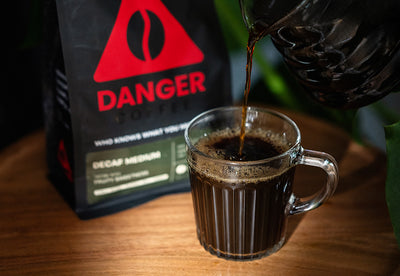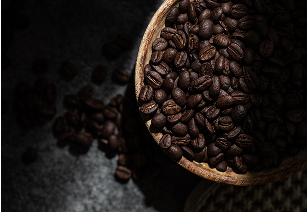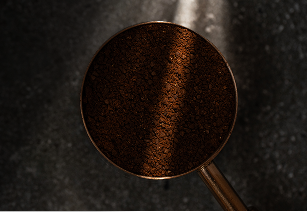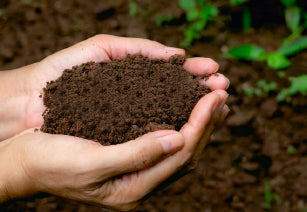IS THERE MOLD IN COFFEE? WHY MOLD-FREE COFFEE MATTERS MORE THAN YOU THINK
Your coffee is probably moldy. One study on Brazilian coffee showed that 91.7% of all coffee samples were contaminated with mold (source). Unfortunately, high roasting and brewing temperatures don’t destroy the dangerous mycotoxins that mold leaves behind. Danger Coffee beans are tested at the source and are retested periodically throughout the journey from the farm to the finished bag. In the US, there are no regulated limits for mycotoxins in coffee. In the EU the acceptable levels for roasted and ground coffee is up to 3 μg/kg, but this only pertains to the most common mycotoxin (Ochratoxin A) (Source).
DANGER COFFEE IS TESTED FOR 13 HARMFUL MYCOTOXINS THAT ARE COMMONLY FOUND IN COFFEE:
|
Ochratoxin A |
Causes liver and kidney tumors in animals and is anticipated to be a human carcinogen (source).
|
| Aflatoxin B1 |
Causes DNA damage, inflammation, and oxidative stress. Exposure leads to liver cancer in humans (source). It is believed to be the most potent among aflatoxins (source).
|
| Aflatoxin B2 |
Less toxic than aflatoxin B1 but still known to have carcinogenic and hepatotoxic properties (source).
|
| Aflatoxin G1 |
Causes double-strand breaks in DNA and may contribute to lung cancer (source).
|
| Aflatoxin G2 |
Classified as a carcinogen and hepatotoxin (source).
|
| Aflatoxin M1 |
A toxic byproduct found in dairy and contaminated crops. Known to damage DNA and liver cells. Classified as a possible human carcinogen (source).
|
| Deoxynivalenol (DON) |
Also called "vomitoxin" due to its acute effects of nausea and vomiting. Linked to immune suppression and gut damage with chronic exposure (source).
|
| Fumonisin B1 |
Common in grains like corn. Associated with esophageal cancer and neural tube defects. Known to disrupt cellular function and liver health (source).
|
| Fumonisin B2 |
Structurally similar to B1 with comparable health risks — linked to liver and kidney toxicity and potential cancer risk (source).
|
| Fumonisin B3 |
Less studied than B1 and B2 but believed to carry similar toxic effects, including liver damage and interference with nutrient absorption (source).
|
| HT2 Toxin |
A trichothecene mycotoxin that can cause immune suppression, cell damage, and gastrointestinal distress with long-term exposure (source).
|
| T2 Toxin |
One of the most potent trichothecene toxins. Known to cause skin irritation, vomiting, immune suppression, and damage to gut lining (source).
|
| Zearalenone |
A mycotoxin that mimics estrogen in the body, disrupting hormone balance and reproductive health in animals — with potential effects in humans (source).
|
IS DANGER COFFEE FREE OF HARMFUL MYCOTOXINS? HERE ARE THE LAB RESULTS
Which mycotoxins does Danger Coffee test for? The lab screens for toxic compounds produced by mold that can contaminate coffee beans.
Testing Limits:
Below is a list of the detection limits set for each mycotoxin that Danger Coffee is tested for.
Aflatoxin B1, B2, G1 ,G2: All 1.000 µg/kg
Aflatoxin M1: 5.000 µg/kg
Combined Aflatoxins B1+B2+G1+G2: 1.000 µg/kg
Ochratoxin A: 1.00 µg/kg
Deoxynivalenol: 50.00 µg/kg
Fumonisins (B1, B2, B3): All 5.00 µg/kg
Toxins HT2: 5.00 µg/kg
Toxins T2: 10.00 µg/kg
Zearalenone: 5.00 µg/kg
What This Means:
The lab didn’t detect any levels of mycotoxins in Danger Coffee. All detection levels are far below internationally recognized safety limits and are the lowest levels of testing possible. This confirms that Danger Coffee is mold-free and safe, even before roasting or remineralization.
WHICH PESTICIDES AND HERBICIDES ARE FOUND IN COFFEE — AND ARE YOU AT RISK?
Pesticide residue in food is a growing global concern, linked to cancer, hormone disruption, and environmental damage—with coffee being one of the most heavily contaminated crops (source).
Every batch of Danger Coffee is third-party lab tested in an IAS-accredited lab for over 500 chemical residues—including pesticides, herbicides, and fungicides. With detection limits set at or below 0.010 µg/kg, which means even the smallest trace would show up. All 500+ contaminants returned non-detectable.
Below is a shortened list of some of the most commonly known contaminants that Danger Coffee is tested for.
| Glyphosate |
|
One of the most widely used herbicides in the world. Glyphosate has been linked to potential cancer risk (classified as "probably carcinogenic" by the International Agency for Research on Cancer), hormone disruption, and gut microbiome imbalances. It’s also known to harm beneficial soil bacteria (source).
|
|
DEET |
|
A chemical commonly used in insect repellents that can contaminate agricultural areas. High exposure to DEET has been associated with skin irritation, neurotoxicity, and potential effects on the nervous system with overuse or ingestion (source).
|
|
Chlorpyrifos |
|
An insecticide banned in many countries due to links with developmental delays in children, neurological effects, and hormone disruption (source). |
|
Atrazine |
|
A widely used herbicide known to disrupt endocrine (hormone) function, particularly reproductive hormones. Atrazine contamination in water has been a major environmental concern (source).
|
|
Malathion |
|
An organophosphate insecticide linked to potential cancer risk, nervous system effects, and hormonal disruption. Classified by the International Agency for Research on Cancer as "probably carcinogenic" (source).
|
|
DDT (Dichlorodiphenyl-trichloroethane) |
|
A banned insecticide known to persist in the environment for decades. Exposure is linked to cancer, reproductive issues, and developmental effects in humans and wildlife (source).
|
|
Carbendazim |
|
A fungicide associated with potential reproductive toxicity and classified as a suspected endocrine disruptor. Exposure has raised concerns for developmental harm in animal studies (source).
|
HOW DANGER COFFEE USES REGENERATIVE FARMING AND SAFE PEST CONTROL
Danger Coffee is grown on farms that follow sustainable, regenerative farming practices designed to minimize chemical use and protect the surrounding ecosystem. While the coffee is not USDA Certified Organic, these small, family-run farms are deeply committed to environmentally responsible methods that prioritize soil health, clean water, and long-term sustainability.
Pest management is handled through environmentally conscious methods that avoid synthetic pesticides. One common technique used on partner farms is the placement of pink adhesive plates or sticky tape throughout the coffee fields to trap and control insect populations. This physical pest control method helps reduce the need for chemical interventions while maintaining the health of the crop.
These farming practices are intended to protect soil health, conserve clean water resources, and preserve biodiversity — while producing high quality coffee in a sustainable and responsible way.
IS DANGER COFFEE PACKAGING SAFE? INSIDE ITS PFAS & BPA-FREE STANDARDS
All packaging materials used for Danger Coffee bags comply with FDA standards for food contact and are free from harmful chemicals, including:
Phthalates (often found in PVC)
PFAS (used to resist grease, oil, water, and heat)
Polycarbonate and epoxy resins – so they’re also BPA-free
Dioxane (found in cellulose acetate and some industrial paints)
Even the inks and adhesives used in printing and lamination are free from toluene and benzene.
HOW TRANSPARENT IS YOUR COFFEE BRAND? HERE’S WHAT SETS DANGER COFFEE APART
The farm-direct nature of Danger Coffee offers unmatched transparency, right down to the source. While many brands rely exclusively on certifications and extensive testing due to working with large conglomerates or mixed batches of coffee beans, Danger Coffee takes a different path. Partnering with smaller farms allows for greater oversight of quality, farming techniques, and sustainable practices.
It’s important to note that single-origin coffee doesn’t always mean the beans come from a single farm. In many cases, coffee from a specific region may be blended in a warehouse, diluting the uniqueness of each farm's beans. Danger Coffee, however, is sourced directly from small estate farms, maintaining the integrity of the coffee and ensuring a consistent, high-quality product.
In Central America, many certified organic farms are owned by large corporations or managed through associations that small farmers must pay to join. This expense can be difficult for smaller farms to justify, especially when the financial return from organic coffee isn’t always high enough to cover the costs. By focusing on specialty coffee, like Danger Coffee, these small farms can generate better revenue and deliver a superior product without the financial strain of obtaining certifications, allowing them to thrive and maintain sustainable farming practices.
IS ORGANIC COFFEE REALLY CLEAN? WHY LAB-TESTED COFFEE MATTERS MORE
Here’s the biggest kicker, just because it’s organic doesn’t mean it’s clean. You’d be surprised how many organic coffees still contain mycotoxins. USDA certified coffee might skip the pesticides, but that doesn’t guarantee it’s mold-free. Mycotoxins can still thrive in improperly processed or stored beans—no matter how “natural” the label looks. If you’re serious about clean energy, demand more than just organic. Choose coffee that’s lab-tested, mold-free, and actually supports your health. Choose Danger.






